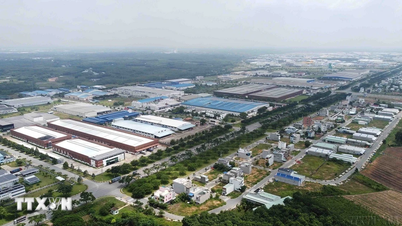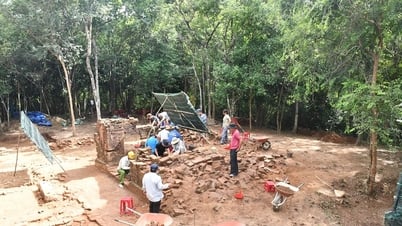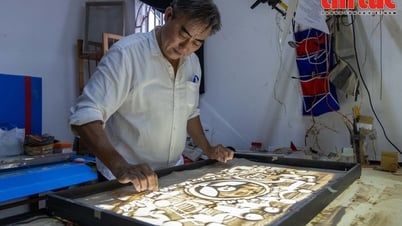The idea of terraforming Mars, by altering the planet’s climate to support life like on Earth, has long been considered science fiction. But a new study argues that it’s time to take the possibility seriously.
“Thirty years ago, colonizing Mars was not only difficult—it was practically impossible,” said Erika DeBenedictis, CEO of Pioneer Labs and lead author of the study. “But new technologies like SpaceX’s Starship and synthetic biology now make it possible.”
The paper, published in the scientific journal Nature Astronomy, not only outlines the complex ethical questions that would face if humans did indeed terraform Mars, but also outlines a possible route to getting started.
Why terraform Mars?
“A habitable planet is better than a dead one,” said Edwin Kite, study co-author and associate professor at the University of Chicago. “We know that Mars was once habitable, based on data from the rovers that have returned. So turning it green again is the ultimate challenge of environmental restoration.”
Fully colonizing Mars could take centuries, even millennia. But the long-term goal would be a Mars with stable liquid water, breathable oxygen, and a thriving ecosystem. In the short term, perhaps just a few colonies of microbes. In the long term, perhaps human cities.
If it reaches the scale of a city, it could be a stepping stone for further human exploration . “As we move out into space, we’re going to need way stations. And on a galactic scale, a habitable planet is the ideal way station,” Kite said.
Not just for people
For Robin Wordsworth, a professor at Harvard University and co-author of the study, terraforming Mars goes beyond the desire to colonize the distant universe. It’s about spreading life.
“I see humanity as part of the biosphere, not separate from it,” he said. “Life is precious, because we know of no other place in the universe where life exists. We have a responsibility to preserve life on Earth, but we also have to consider how to spread it to other worlds .”
Colonizing Mars doesn’t mean abandoning Earth. On the contrary, it could help us solve climate and sustainability problems right here at home.
Nina Lanza, a planetary scientist at Los Alamos National Laboratory (USA) and co-author of the study, sees Mars as a “testing ground” for planetary engineering.
“If we want to learn how to modify the Earth environment to make it suitable for us and other species, it might be better to try it on Mars first. See if it works,” she said. “Personally, I want to be more careful with our own planet. This is the only place we can live.”
Technologically, Mars is the perfect place to test new things.
“Green technology development on Earth is often slowed down by competing with older, dirtier solutions that are deeply entrenched in infrastructure and economics,” DeBenedictis explains. “Mars has no oil, no established infrastructure, no established habits. So developing green technology for space is an efficient way to bring it to maturity and then apply it back to Earth.”
But should we terraform Mars?
While it is technically possible, the question is: should it be? Some scientists warn against it.
“If we decide to terraform Mars, we will change the planet in a way that is irreversible,” Lanza said. “Mars is its own world, with its own history. Once we terraform it, we may never have the opportunity to study it the same way again.”
We may even destroy evidence of ancient life, if it ever existed.
“If you change the Martian environment, it will affect the chemistry of the surface and the subsurface,” she said. “That could wipe out any traces of it. It’s impossible to say for sure, but it’s a big risk.”
Currently, terraforming the Red Planet would require massive changes, primarily warming the surface to support life and hold liquid water. While the technology to do so isn’t quite there yet, the team proposes a three-phase path:
Phase 1 would use non-biological climate engineering techniques – such as reflecting sunlight with space mirrors, spreading nanoparticles or lining the surface with aerogel tiles – to warm Mars by at least 30°C. This would melt the ice, allowing CO₂ trapped beneath the surface to escape, creating a thicker atmosphere that could hold liquid water.
Phase 2 would introduce extremophiles, possibly genetically engineered anaerobic bacteria, to survive the harsh conditions of Mars. They would begin producing oxygen and organic matter, gradually changing the chemistry of the planet.
Phase 3, the longest, focuses on building more complex ecosystems. We will have to find ways to increase atmospheric pressure, increase oxygen levels, eventually supporting higher plants and, in the long term, allowing humans to breathe without the aid of breathing aids.
Where to start?
The authors agree that if Mars is to become habitable, action will need to be taken on multiple fronts in parallel.
“To know when and how to start making other worlds habitable, we need to understand the benefits and costs. This can only be done through theory and practical testing, involving physics, chemistry, biology, and materials science,” Kite said.
First, we need to continue studying Mars. Lanza emphasized the importance of the Mars Sample Return mission, a NASA and European Space Agency campaign to bring samples from the Perseverance rover back to Earth.
“The samples have been recorded and analyzed as thoroughly as possible on Mars,” she said. “Now it’s time to bring them back, to answer the key questions: What is Mars made of? Are there signs of life?”
And in parallel, we can begin to experiment with small-scale planetary improvements.
“Missions to Mars in 2028 or 2031 should include small-scale field experiments to test local warming capabilities,” DeBenedictis suggested./.
(Vietnam+)
Source: https://www.vietnamplus.vn/tham-vong-cai-tao-dia-chat-bien-sao-hoa-tro-thanh-mot-hanh-tinh-xanh-post1043228.vnp































































































Comment (0)